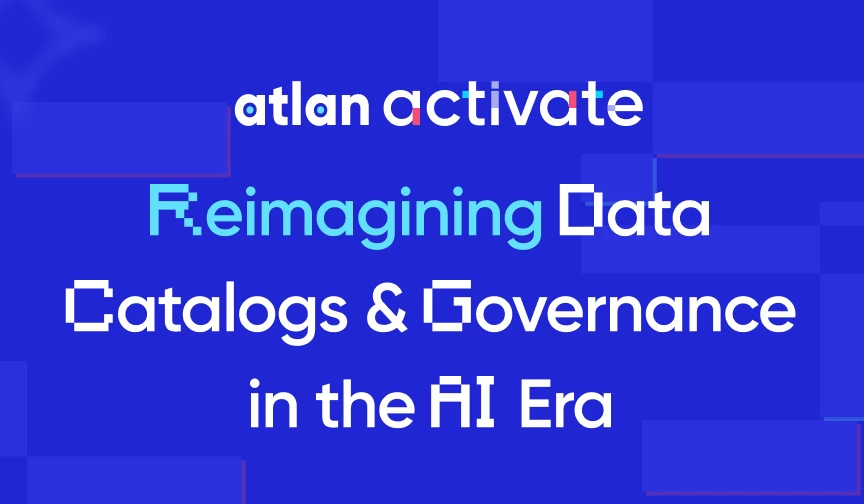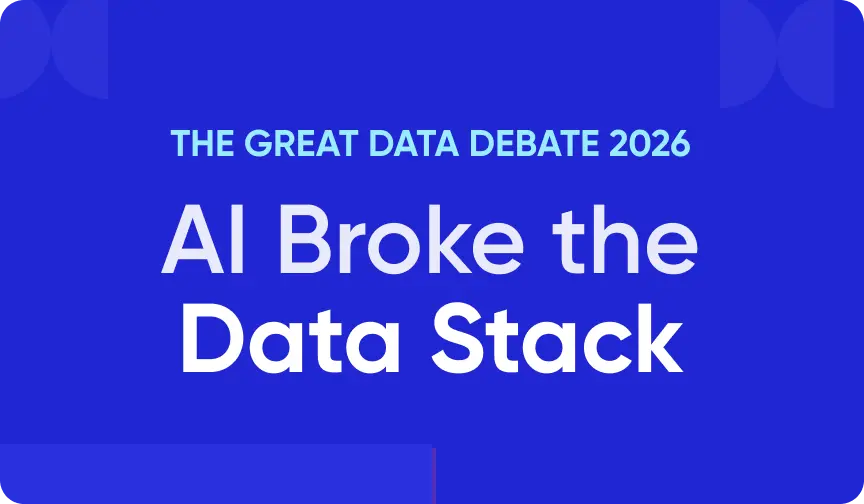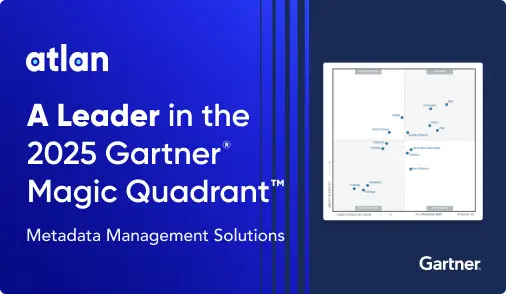Data Governance Lifecycle: Key Stages, Challenges, Core Capabilities

Last Updated on: April 25th, 2025 | 10 min read
Unlock Your Data's Potential With Atlan

The data governance lifecycle defines how organizations manage data policies, ownership, quality, and compliance—across every step of a data asset’s journey. When done right, it creates a foundation of trust, ensuring decisions are made on accurate, secure, and well-governed data. This is vital for agility, transparency, and resilience in a rapidly evolving data landscape.
In this article, we’ll explore:
- The core stages of the data governance lifecycle
- Why automation is critical for scaling and sustaining governance
- The key capabilities modern platforms need to support this lifecycle end to end
Table of Contents
Permalink to “Table of Contents”- What is the data governance lifecycle?
- What are the various stages of the data governance lifecycle?
- What are some of the most common challenges of managing the data governance lifecycle?
- How can automation help in scaling governance and sustaining the data governance lifecycle?
- What is the role of a metadata control plane in sustaining the governance lifecycle?
- Wrapping up: Why the data governance lifecycle matters now more than ever
- Data governance lifecycle: Frequently asked questions (FAQs)
What is the data governance lifecycle?
Permalink to “What is the data governance lifecycle?”The data governance lifecycle outlines the stages for managing data—from creation to archival—through policies, processes, and controls.
At its core, the data governance lifecycle ensures end-to-end traceability—from a data asset’s origin in upstream systems to its transformation and use in downstream reporting. This traceability builds trust by making data use transparent, verifiable, and aligned with defined governance policies.
Each stage—like data discovery, policy setting, and monitoring—supports core governance pillars such as metadata management, data ownership, security, and compliance. Understanding this lifecycle is essential for building trust in data, meeting regulatory expectations, and enabling confident, insight-driven decision-making.
Let’s break down these stages to see how organizations can practically implement and sustain governance through each step of the lifecycle.
What are the various stages of the data governance lifecycle?
Permalink to “What are the various stages of the data governance lifecycle?”Data governance follows a five-stage lifecycle:
- Discussion and development
- Data discovery and cataloging
- Data governance policy setting
- Deployment and implementation
- Continuous monitoring and optimization
Stage 1: Discussion and development
Permalink to “Stage 1: Discussion and development”Data governance is effective when you adopt a collaborative, rather than a siloed approach. Since this foundational stage sets the direction for your data governance program, it’s vital to work closely with stakeholders across business, legal, compliance, and technical functions.
This, in turn, helps you:
- Identify critical data governance issues (such as quality gaps, access risks, siloed data, and more)
- Design scalable workflows tied to business goals
- Evaluate tooling options to support discovery, access control, stewardship, and lineage
- Define clear success metrics (such as time-to-insight, error rates, compliance coverage, and more)
With alignment established, the next step is visibility—knowing what data you have and where it lives.
Stage 2: Data discovery and cataloging
Permalink to “Stage 2: Data discovery and cataloging”In this stage, you identify and inventory all enterprise data assets and catalog them in a centralized, searchable system. This is crucial as it lays the foundation for AI-readiness, end-to-end visibility of your data estate, and enhanced context of your data assets.
This stage would involve the following:
- Set up a modern data catalog where everyone can search for data using natural language, improving accessibility, usability and trust in data
- Implement active metadata management to continuously track data changes and enrich assets with business context
- Use metadata to drive GenAI and AI governance use cases
- Build a business glossary to standardize key terminology across the organization, ensuring consistency in data interpretation and collaboration
- Promote transparency and trust in your data estate through clear data lineage, ownership, and classification tags, among others
With a unified understanding of the data estate in place, it becomes possible to set effective governance rules.
Stage 3: Data governance policy setting
Permalink to “Stage 3: Data governance policy setting”This stage involves defining the rules that will guide your data’s use, protection, and quality:
- Set governance policies for data access, accuracy, retention, compliance, and usage
- Define data quality standards based on key dimensions like accuracy, completeness, consistency, timeliness, uniqueness, and validity
- Establish data stewardship roles to enforce policies and maintain domain-specific accountability
- Introduce data contracts to formalize expectations between data producers and consumers (especially useful in decentralized architectures like data mesh), ensuring clarity on schema definitions, SLAs, and compliance requirements
Rules are only useful when they’re embedded into workflows. The next stage ensures they’re put into action.
Also, read → Data governance policy setting tools 101 | Why should you automate data stewardship?
Stage 4: Deployment and implementation
Permalink to “Stage 4: Deployment and implementation”The next step is to roll out governance processes and embed them into the daily work of your teams. Embedding governance into each stage of the data lifecycle ensures it becomes a natural part of how data teams operate—not an afterthought.
This involves integrating lineage tracking, granular access controls, and data quality checks directly into workflows:
- Set up a transparency center–a centralized policy hub–to track data governance policy coverage in real-time, spot gaps, automatically track compliance, etc.
- Enable automated, column-level lineage tracking that dynamically maps schema changes, transformations, metadata updates, and supports root cause and impact analysis
- Automate policy compliance with rule-based checks, automated reports, auto-tag propagation for PII data, etc.
- Onboard all stakeholders to new policies and tools through hands-on training, continuous improvement workshops, and a self-service tool stack
- Introduce process changes incrementally, giving each policy update at least a month before reviewing performance
With deployment complete, the final step is ongoing oversight—ensuring governance evolves with your organization.
Also, read → Data policy enforcement tools 101 | Must-have qualities in data governance solutions in 2025
Stage 5: Continuous monitoring and optimization
Permalink to “Stage 5: Continuous monitoring and optimization”Governance is never “done”—it evolves alongside your business and technology stack:
- Continuously monitor key data governance metrics such as policy adoption, data quality scores, access patterns, and audit results
- Scale your governance efforts with automation and AI – AI can help classify data, suggest governance rules, and detect non-compliant behavior before it causes issues
- Track trends to assess the effectiveness of governance policies and identify areas for improvement
- Adjust governance processes in response to regulatory changes, business feedback, or data growth
- Foster a culture of data, accountability, transparency, and constant iteration
While the five-stage lifecycle offers a structured approach, putting it into action comes with its own set of challenges.
Also, read → Everything you need to know about automated data governance
What are some of the most common challenges of managing the data governance lifecycle?
Permalink to “What are some of the most common challenges of managing the data governance lifecycle?”“The historical approach to data governance has been fundamentally fragmented, with different teams operating in isolation and creating their own governance silos. This siloed approach has led to confusion and inefficiency.” - A key insight from Gartner’s data governance magic quadrant on rising complexity
Despite growing investment in data governance, many organizations still struggle to manage it effectively. The biggest hurdles often come from fragmented ecosystems, manual processes, and rising data complexity.
When governance is spread across disconnected tools, spreadsheets, or tribal knowledge, enforcing policies or tracking data lineage becomes time-consuming and error-prone. Legacy systems and siloed teams only worsen these issues, making collaboration difficult and slowing down response to business or regulatory needs.
Most critically, without the right metadata context, it becomes nearly impossible to ensure visibility, traceability, or accountability—undermining trust in your data and the decisions it drives.
To overcome these challenges and scale governance effectively, organizations need to move beyond manual methods. That’s where automation becomes essential.
How can automation help in scaling governance and sustaining the data governance lifecycle?
Permalink to “How can automation help in scaling governance and sustaining the data governance lifecycle?”“As data complexity keeps growing, AI-powered automation is an essential accelerant for effective governance at scale.” - A key insight from Gartner’s data governance magic quadrant on automation
Automation is the key to embedding governance into fast-moving, high-volume data ecosystems. It allows organizations to enforce policies, track changes, and manage risk—without relying on time-consuming, manual intervention.
For example, automated policy enforcement can trigger alerts when compliance rules are breached or tag sensitive data as soon as it’s detected. AI-enriched metadata can auto-generate descriptions or classifications, improving searchability and understanding across teams.
Automated workflows also reduce the operational load on stewards by handling repetitive tasks like data quality checks, audit trail generation, and governance feedback loops. This frees up your teams to focus on high-impact initiatives like improving governance frameworks or responding to new regulations.
Also, read → Data governance in the AI era
But to do this effectively, your governance platform needs a metadata control plane. Let’s take a closer look.
What is the role of a metadata control plane in sustaining the governance lifecycle?
Permalink to “What is the role of a metadata control plane in sustaining the governance lifecycle?”To scale governance across modern data estates, it must be embedded into every stage of the lifecycle. Additionally, you need end-to-end visibility and 360o context. That’s where a metadata control plane comes in.
A metadata control plane acts as the connective tissue between tools, processes, and people. It consolidates metadata from across your data ecosystem, enabling real-time visibility into data assets, transformations, usage, and policies.
This unified layer powers critical capabilities like active metadata management, lineage tracking, policy enforcement, and AI integration—all essential for sustaining the governance lifecycle at scale.
Let’s now explore the specific capabilities that power such a control plane.
What are some of the core capabilities required to support the data governance lifecycle?
Permalink to “What are some of the core capabilities required to support the data governance lifecycle?”To manage the lifecycle effectively, modern data governance platforms need the following capabilities (this isn’t an exhaustive list):
- Active metadata management to capture and sync context in real time
- Automated data lineage to trace data flow from source to consumption across your data estate
- Policy management tools for scalable rule-setting and enforcement
- Access controls tailored by user personas, domains, sensitivity levels, etc.
- Monitoring and alerting for policy violations, data quality degradation, and more
- Business glossary and automated tag propagation to ensure consistent, shared understanding of data at scale
These capabilities support traceability, audit readiness, and faster, more informed decision-making—across the entire data lifecycle.
Wrapping up: Why the data governance lifecycle matters now more than ever
Permalink to “Wrapping up: Why the data governance lifecycle matters now more than ever”A well-defined data governance lifecycle is the foundation for ensuring data is trustworthy, compliant, and ready for business impact. By moving through each stage—from aligning stakeholders to continuous optimization—organizations can drive consistency, reduce risk, and enable confident, insight-driven decisions.
But as data ecosystems grow more complex, sustaining the governance lifecycle requires automation and AI, embedding policies into workflows, tracking changes in real time, and ensuring consistent enforcement.
A metadata control plane brings this to life—connecting tools, teams, and context across the stack. It enables active metadata management, granular lineage, and policy execution at scale.
Done right, the governance lifecycle becomes a strategic enabler for business decision-making, analytics, and change.
Data governance lifecycle: Frequently asked questions (FAQs)
Permalink to “Data governance lifecycle: Frequently asked questions (FAQs)”1. What is the data governance lifecycle?
Permalink to “1. What is the data governance lifecycle?”The data governance lifecycle refers to the various stages that guide how enterprises manage data ownership, quality, access, and compliance from creation to archival.
2. Why is the data governance lifecycle important?
Permalink to “2. Why is the data governance lifecycle important?”The data governance lifecycle ensures consistent data management, policy enforcement, and auditability—building trust in data while helping organizations meet compliance requirements and drive informed decision-making.
3. What are the main stages of the data governance lifecycle?
Permalink to “3. What are the main stages of the data governance lifecycle?”The core stages of the data governance lifecycle include:
- Discussion and development
- Data discovery and cataloging
- Data governance policy setting
- Deployment and implementation
- Continuous monitoring and optimization
4. Who is responsible for managing the data governance lifecycle?
Permalink to “4. Who is responsible for managing the data governance lifecycle?”Managing the data governance lifecycle is a collaborative effort involving various stakeholders, such as data governance leaders, data stewards, compliance teams, data product managers, and data engineers, among others.
5. How does metadata management enhance the data governance lifecycle?
Permalink to “5. How does metadata management enhance the data governance lifecycle?”Metadata provides context, supports lineage, and improves overall visibility, making it easier to track data usage and understanding, ensuring traceability and 360o context on all data assets throughout the lifecycle.
6. How does automation support the data governance lifecycle?
Permalink to “6. How does automation support the data governance lifecycle?”Automation helps scale governance by enabling real-time policy enforcement, metadata tracking, quality checks, and alerting. This reduces manual processes and helps in embedding governance across all workflows at scale.
7. What capabilities should you look for in data governance platforms to sustain the data governance lifecycle?
Permalink to “7. What capabilities should you look for in data governance platforms to sustain the data governance lifecycle?”You should look for essential governance capabilities, such as (but not limited to):
- Active metadata management
- Unified transparency center for policies
- Automated, cross-system, column-level data lineage
- Data catalog with natural language search and discovery
- Business glossary
- Rule-based workflows for compliance
- AI-assisted documentation
Share this article
Atlan is the next-generation platform for data and AI governance. It is a control plane that stitches together a business's disparate data infrastructure, cataloging and enriching data with business context and security.
Data governance lifecycle: Related reads
Permalink to “Data governance lifecycle: Related reads”- What is Data Governance? Its Importance, Principles & How to Get Started?
- Data Governance Policy: How to Create One for Your Organization
- Data Governance and Compliance: An Act of Checks & Balances
- Data Compliance Management in Banking: Best Practices & Strategies
- Data Lineage: What It Is & Why It’s Critical for Governance
- Data Contracts: A Modern Approach to Data Governance
- How to Create Data Contracts in Atlan
- How to Automate Policy Compliance in Data Governance
- Data Governance Policy Enforcement: Ensuring Compliance & Security





















